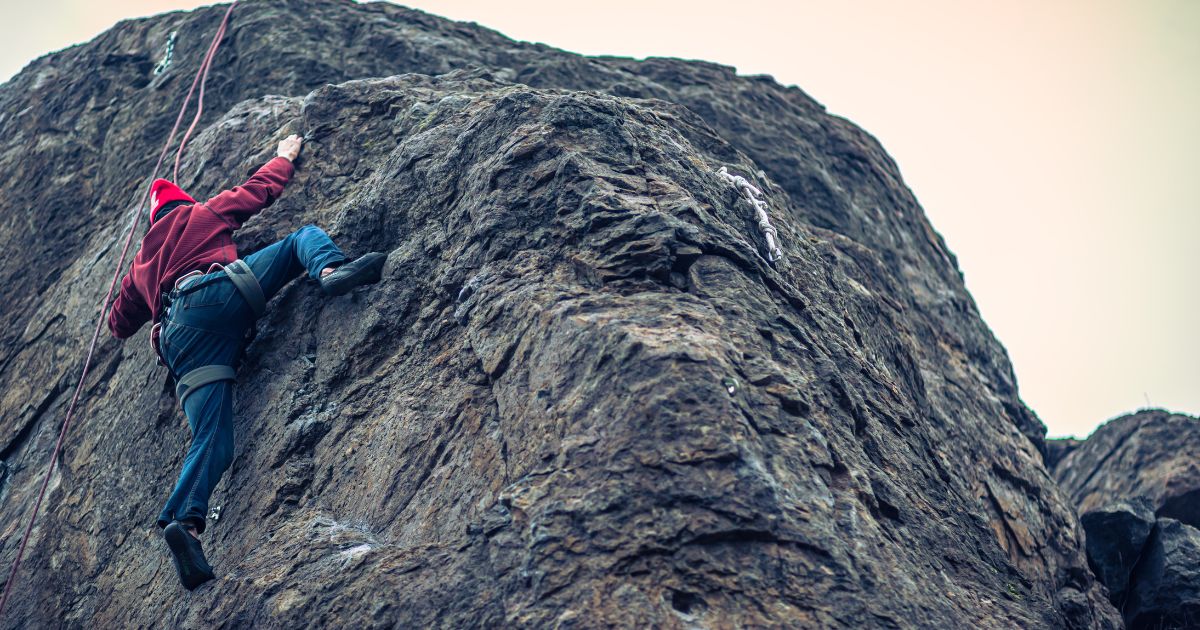Table of Contents
Drop Knee Climbing Technique: Avoiding 3 Common Mistakes Climbers Make
Unveiling the Secrets of Drop Knees
Are you having trouble learning how to perform the Drop Knee Climbing Technique? Don’t worry, we’ll explain all about drop knees in this detailed guide and highlight the three common mistakes that climbers make when they’re first starting. The secret to improving your climbing skills is to recognize these pitfalls, regardless of your experience level. This applies to both novices and seasoned climbers who are just beginning to venture into the vertical world.
Mistake #1: Twisting the Hip in the Wrong Direction
The Foundation of Effective Drop Knees
Mistake #2: Inappropriate Drop Knees on Slabs
Adapting Drop Knees to Different Terrains
As they advance past simple errors, intermediate climbers frequently encounter difficulties negotiating slabs when performing drop knees. Unlike simple overhangs, slabs require a careful and unique approach.
When it comes to slab climbing, it’s important to realize that the standard drop knee method may not be adequate. Climbers must instead adopt a more specialized strategy. On slabs, using the big toe as a point of distribution for weight shifts away from the traditional drop-knee technique.
One important point of differentiation is the way the toes point. On a slab that has a slight incline, turning your toes and relying on your pinky toe to support your weight can lead to instability. To attain the best possible balance and control, climbers need to practice their footwork.
You can improve your slab strategy by using rock-overs and flags. These methods provide a dynamic and efficient way to deal with the particular difficulties that slab surfaces bring. Recall that the secret to success is to modify techniques to fit the climbing surface. For the intermediate climber looking to take on a variety of terrains, learning the subtleties of drop knees on slabs opens up a whole new world of possibilities.
Mistake #3: Feet Positioning for Advanced Climbers
Balancing Act: Advanced Considerations for Drop Knees
In summary
The drop-knee technique requires refinement to become proficient. Your climbing skills are enhanced by every step you take, from properly lining up your hips to adjusting to different types of terrain and sophisticated foot placement. Accept these classes in lower grades so that you can concentrate only on technique problems. Drop knees will come naturally to you as you gain experience, opening up new climbing opportunities. Recall that practice makes perfect, and if you correct these typical errors, you’ll soon find yourself climbing walls with ease.
Related Posts
- Foot placement for climbing beginners
- Training Drills Every Climber Should Do
- The 7 Essential Movements of Bouldering
- The 5 Fundamentals of Climbing You Need to Know
- How to Flag: A Climbing Technique for Developing Balance
- How To Improve Your Climbing Footwork? – 4 key Stages
- 8 Essential Tips for Outdoor Rock Climbing Beginners
- 7 Techniques Every Climber Must Know
- The 7 Best Climbing Shoes for Beginners










Discussion about this post